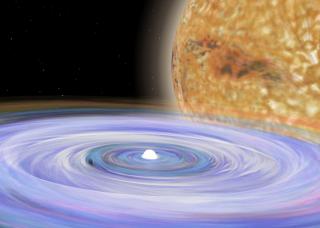Bibcode
Manser, C. J.; Gänsicke, Boris T.; Eggl, Siegfried; Hollands, Mark; Izquierdo, P.; Koester, Detlev; Landstreet, John D.; Lyra, Wladimir; Marsh, Thomas R.; Meru, Farzana; Mustill, Alexander J.; Rodríguez-Gil, P.; Toloza, Odette; Veras, Dimitri; Wilson, David J.; Burleigh, Matthew R.; Davies, Melvyn B.; Farihi, Jay; Gentile Fusillo, Nicola; de Martino, Domitilla; Parsons, Steven G.; Quirrenbach, Andreas; Raddi, Roberto; Reffert, Sabine; Del Santo, Melania; Schreiber, Matthias R.; Silvotti, Roberto; Toonen, Silvia; Villaver, Eva; Wyatt, Mark; Xu, Siyi; Portegies Zwart, Simon
Referencia bibliográfica
Science, Volume 364, Issue 6435, pp. 66-69 (2019).
Fecha de publicación:
4
2019
Revista
Número de citas
135
Número de citas referidas
125
Descripción
Many white dwarf stars show signs of having accreted smaller bodies,
implying that they may host planetary systems. A small number of these
systems contain gaseous debris discs, visible through emission lines. We
report a stable 123.4-minute periodic variation in the strength and
shape of the Ca II emission line profiles originating from the debris
disc around the white dwarf SDSS J122859.93+104032.9. We interpret this
short-period signal as the signature of a solid-body planetesimal held
together by its internal strength.
Proyectos relacionados

Estrellas Binarias
El estudio de las estrellas binarias es una parte esencial de la astrofísica estelar. Una gran parte de las estrellas de nuestra Galaxia y de otras galaxias se ha formado en sistemas binarios o múltiples, por lo que entender la estructura y evolución de estos sistemas es importante desde el punto de vista estelar y galáctico. Un aspecto en el que
Pablo
Rodríguez Gil